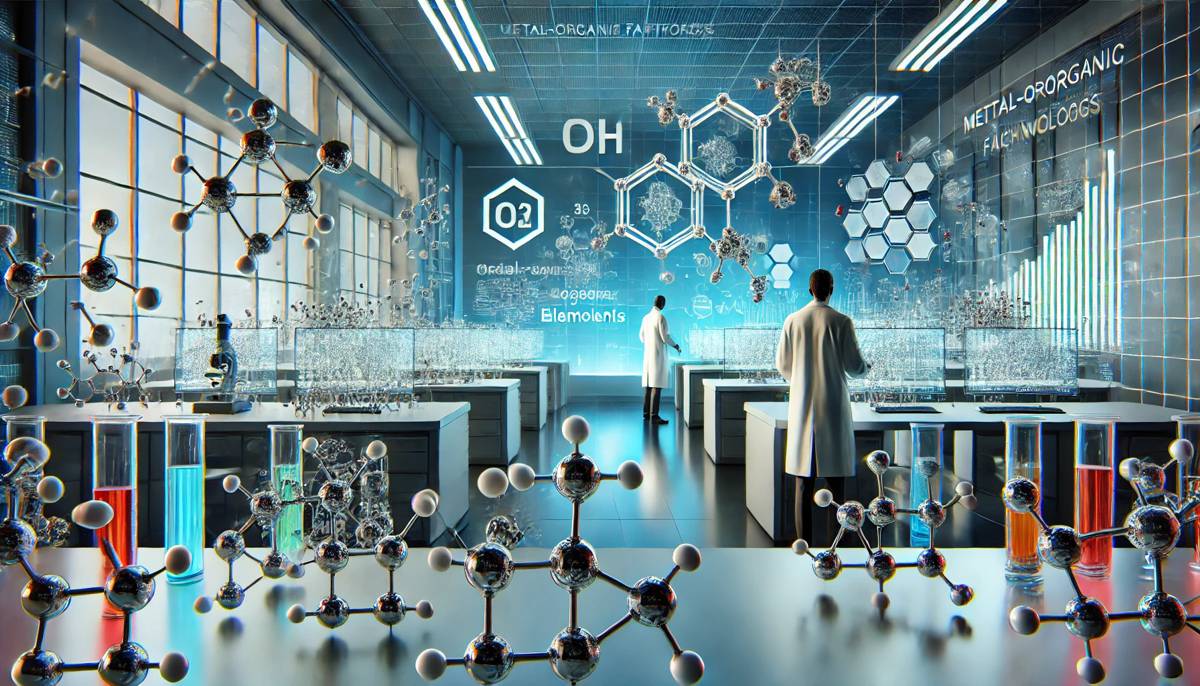Cleaner Metal Purification with Innovative Approach to Rare-Earth Extraction
Rare-earth elements are the unsung heroes of modern technology, quietly powering everything from smartphones and LED lightbulbs to electric vehicles and wind turbines.
Yet, extracting these critical metals from complex ores is a dirty business, often involving harsh acids and hazardous solvents in a process dominated by China. Now, a pioneering team from Sandia National Laboratories is charting a cleaner path with an innovative approach to separating rare-earth elements using molecular “sponges.”
The Quest for Sustainable Metal Purification
For the past three years, researchers at Sandia have been working to revolutionise the way we purify rare-earth elements, aiming to make the process greener and more sustainable. Their method involves creating and modifying metal-organic frameworks (MOFs)—complex, tinker-toy-like molecules that act as selective sponges for these metals.
The team’s goal is ambitious: to design MOFs that can selectively absorb specific rare-earth elements from a mixture, leaving the rest behind. This would mark a significant leap forward, reducing the environmental impact of metal purification and potentially reshaping a supply chain currently fraught with ecological and geopolitical challenges.
“Our work has shown that MOFs can selectively pick out rare-earth elements from mixtures,” said Anastasia Ilgen, a Sandia geochemist and project lead. “By tweaking the surface chemistry of these MOFs, we can fine-tune their selectivity for different metals, making the process much more efficient.”
Understanding MOFs: The Science Behind the Sponges
MOFs are nanoscale structures made up of metal “hubs” connected by carbon-based “rods.” These rods can be swapped out or modified to create a variety of configurations, allowing scientists to design MOFs with highly specific properties. The beauty of MOFs lies in their versatility—they can be tailored to bind to different elements by changing their chemical makeup or introducing structural defects.
In their research, the Sandia team focused on two types of zirconium-based MOFs known for their stability in water and adaptability. By experimenting with different chemical groups attached to the MOFs, they discovered how these modifications affected the sponges’ ability to capture rare-earth elements.
Key Findings from the Study:
- MOFs with Missing Linkers: These structures bound more rare-earth elements compared to fully intact MOFs, highlighting the role of structural defects in enhancing metal adsorption.
- Chemical Group Modifications: Adding negatively charged groups like phosphonates to the MOFs significantly improved metal binding, while positively charged groups had minimal effect.
- Selectivity for Specific Metals: The research revealed that tweaking the MOFs’ chemistry could increase selectivity, particularly for nickel over cobalt, offering a path forward for custom-designed metal extraction.
“Both approaches we tested—changing the structure and adding surface groups—effectively tuned the MOFs’ selectivity for different ions,” said Dorina Sava Gallis, a Sandia materials chemist involved in the project. “We’re now exploring new combinations of these modifications to develop sponges that target specific rare-earth metals.”
Harnessing Computational Modelling for Smarter Designs
To refine their designs further, the team turned to advanced computational modelling techniques. Sandia’s Kevin Leung, a computational materials scientist, used molecular dynamics simulations to explore how rare-earth elements interact with water and different MOF structures. His findings were crucial in guiding the next steps of the research.
Leung’s simulations revealed that rare-earth elements are more attracted to negatively charged chemicals like sulfate or phosphate compared to water, particularly heavier elements such as lutetium. However, finding a chemical that selectively binds to one metal while excluding others remains a challenge, as the team observed uniform trends across different elements.
“The goal was to identify a chemical group that would allow us to target one metal specifically, but the trends were consistent across the board,” Leung explained. “We’re now looking at combining different charged surface chemicals to create a more selective binding environment.”
Visualising Rare-Earth Interactions with X-ray Spectroscopy
To gain a clearer understanding of how rare-earth metals interact with MOFs, the team employed X-ray spectroscopy, a powerful tool that allows scientists to “see” chemical bonds at the atomic level. Using synchrotron-based X-ray absorption techniques at Argonne National Laboratory, Ilgen examined the chemical environment of three rare-earth elements within different MOF structures.
Ilgen’s work provided ground-breaking insights, revealing that rare-earth metals often bind directly to the metal hubs within MOFs, even when structural defects are present. This finding is significant because it suggests that MOFs without defects—those that are more stable and reusable—can still effectively capture rare-earth elements.
“My spectroscopy work is the first to identify the surface complexes formed by rare-earth elements in MOFs,” Ilgen noted. “Previous studies only inferred these interactions based on adsorption trends, but now we have visual evidence. This opens up new possibilities for designing MOFs with tailored binding sites.”
Exploring Future Design Strategies for Selective Sponges
Armed with these insights, the Sandia team is exploring a range of strategies to create MOFs that can selectively extract individual rare-earth elements. By adjusting the chemistry of the metal hubs or introducing multiple metal types, they hope to fine-tune the binding preferences of their sponges. Alternatively, modifying the surface chemistry with strong, ion-specific groups or altering the nanoscale pore sizes of the MOFs could further enhance selectivity.
“There are several possible design strategies for ion-selective MOFs,” Ilgen explained. “Whether it’s adjusting the hub chemistry, fine-tuning surface groups, or altering pore dimensions, we’re excited about the potential of these materials to revolutionise rare-earth metal extraction.”
A Greener Future for Metal Purification
The work being done by Sandia National Laboratories represents a promising step towards more sustainable methods of rare-earth element extraction. By developing selective sponges that can target specific metals, the team hopes to reduce the environmental footprint of this essential industrial process.
With continued research and refinement, these MOFs could become a critical tool in the global effort to create a cleaner, greener supply chain for rare-earth elements—ensuring that the technologies powering our modern world are built on sustainable foundations.




















